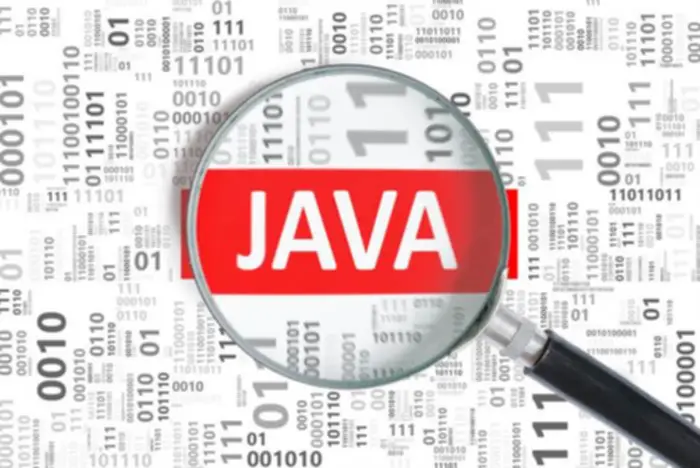Month: September 2023
Scholarly Literature Mining With Data Retrieval And Pure Language Processing: Preface Pmc
Text Mining, also referred to as textual content analytics, is the method of extracting significant patterns, tendencies, and insights from huge portions of unstructured text information. Text Mining uses a mixture of techniques, including scrumban methodology pure language processing, knowledge mining, and machine studying, to analyze and derive value from textual info. NLP focuses on understanding and producing human language, using strategies like sentiment analysis and machine translation. Text mining, then again, extracts actionable insights from text knowledge by way of methods such as clustering and pattern recognition. While NLP deals with language processing, text mining concentrates on deriving priceless info from textual content.
Key Variations Between Natural Language Processing And Text Mining
Nine papers have been rejected and one paper was withdrawn by the authors in the course of the reviewing rounds. To enable computers to grasp, interpret, and generate human language in a valuable method. Machine learning models apply algorithms that be taught from data to make predictions or classify textual content primarily based on features. For example iot cybersecurity, ML models might be educated to classify movie critiques as optimistic or negative based on options like word frequency and sentiment.
What Are The Purposes Of Nlp And Text Mining?
By understanding the variations between NLP and Text Mining, organizations could make knowledgeable decisions on which method to adopt for his or her data evaluation wants. While NLP is centered round understanding and generating human language, its applications embody chatbots, voice assistants, and machine translation companies. Text Mining, on the opposite hand, goals to extract actionable insights from unstructured textual content data, with frequent use cases in data-driven decision-making, sentiment evaluation, and customer feedback analysis. The integration of natural language processing (NLP) and text mining strategies has emerged as a key method to harnessing the potential of unstructured scientific text information. This chapter discusses the challenges posed by clinical narratives and explores the need to transform them into structured formats for improved data accessibility and analysis. The chapter navigates via key ideas, including text pre-processing, textual content classification, textual content clustering, matter modeling, and advances in language models and transformers.
Distinguishing Nlp And Textual Content Mining: Key Differences
Thus, make the information contained within the textual content material obtainable to a spread of algorithms. It is basically an AI technology that features processing the data from quite a lot of textual content material paperwork. Natural Language Processing, or NLP, is a department of synthetic intelligence (AI) centered on enabling machines to know, interpret, and generate human language. NLP aims to bridge the communication gap between people and computer systems by facilitating seamless interplay by way of natural language.

- It’s very difficult, or generally even impossible, to incorporate the raw textual content into the automated knowledge analytics, using classical procedures and statistical models available for relational datasets.
- At Coherent Solutions, we specialize in combining the ability of NLP and text mining to rework your information into actionable insights.
- This section delves into the intricacies of NLP, significantly focusing on text preprocessing and classification strategies.
- Natural Language Processing, or NLP, is a department of synthetic intelligence (AI) targeted on enabling machines to know, interpret, and generate human language.
- This device quickly supplies correct solutions and assets, reducing escalations, improving customer support, and lowering costs.
- Without correct contextual understanding, NLP models could misinterpret intent or meaning, resulting in errors in sentiment analysis or information extraction.
As organizations continue to navigate the complexities of procurement, these applied sciences will play a pivotal position in driving effectivity and effectiveness in operations. NER is crucial for figuring out and classifying key entities inside procurement paperwork, corresponding to supplier names, product types, and contract phrases. This process enhances the ability to rapidly retrieve related information and assess supplier risks. In response to the CFP, we acquired 24 submissions which have been reviewed by two to three reviewers (for overlapping papers, eg., IR and NLP, we selected reviewers from each domains).
It presents pre-trained models for various languages and helps duties like tokenization, named entity recognition, and dependency parsing. SpaCy is free for educational use and has a business license for enterprise applications. The library is usually used in real-time purposes such as chatbots, data extraction, and large-scale text processing. This section will specifically handle the developments in procurement textual content mining, detailing numerous studies and evaluating them in opposition to present methodologies. The goal is to articulate the distinctive challenges and options discovered inside this domain, emphasizing the importance of structured information bases derived from unstructured information. From an IR perspective, surprisingly, scholarly information retrieval and recommendation, although gaining momentum, haven’t always been the primary target of research prior to now.

In conclusion, the field of textual content mining continues to evolve, pushed by the need for extra sophisticated techniques and the growing quantity of unstructured information. By focusing on the combination of superior methodologies and real-world purposes, the potential for impactful insights from text mining is immense. NER is a crucial method that identifies and classifies key entities in textual content, such as names, organizations, and places. This technique is essential for constructing structured knowledge bases from unstructured information.
This section delves into the assorted methodologies and functions of textual content mining within procurement, highlighting its significance and the challenges confronted in real-world implementations. In summary, NLP encompasses a variety of techniques and fashions that enable machines to course of and perceive human language effectively. By leveraging advanced preprocessing strategies and powerful classification algorithms, NLP continues to evolve, driving innovation across multiple domains. Text mining and Natural Language Processing (NLP) have advanced considerably, integrating varied strategies to extract priceless insights from unstructured data. This section delves into the advancements in NLP strategies for textual content mining, highlighting key methodologies and their applications. NLP typically deals with more intricate duties because it requires a deep understanding of human language nuances, including context, ambiguity, and sentiment.
Natural Language Processing (NLP) is a critical component of contemporary artificial intelligence, enabling machines to interpret and manipulate human language. This part delves into the intricacies of NLP, particularly focusing on text preprocessing and classification methods. Stanford NLP is a collection of instruments for NLP tasks corresponding to P-o-S tagging, named entity recognition, and parsing. It presents both free and paid versions, with the latter providing extra features and help. Well-regarded tools for their high accuracy and extensive functionality, together with the Stanza toolkit which processes textual content in over 60 human languages.
Natural Language Processing and Text Mining not only discusses purposes of Natural Language Processing strategies to sure Text Mining duties, but also the converse, the use of Text Mining to help NLP. It assembles a various views from internationally acknowledged researchers and emphasizes caveats in the attempt to use Natural Language Processing to textual content mining. This state-of-the-art survey is a must have for advanced students, professionals, and researchers. NLP is a robust tool; nonetheless, despite its capabilities, it faces a quantity of challenges when applied to textual content mining. These challenges arise from the complexity of human language, which includes variations in syntax, semantics, and context.
Text Mining, although nonetheless complicated, focuses more on extracting valuable insights from massive text datasets. Extracting information from unstructured textual knowledge is a crucial aspect of text mining, which intersects with Natural Language Processing (NLP). This section delves into varied textual content mining strategies that improve the understanding and processing of human language.
Natural Language Processing (NLP) and textual content mining are two key strategies that unlock the potential of huge data and transform it into actionable insights. In addition, text mining methods are increasingly applied to investigate internet content, particularly within the context of service and product provisions. For instance, social media knowledge is mined to develop functions in sectors similar to legal and construction. For occasion, the implementation of textual content classification using the Python package deal transformers permits for environment friendly categorization of text information.
Statistical strategies in NLP use mathematical models to research and predict textual content based on the frequency and distribution of words or phrases. A hidden Markov mannequin (HMM) is utilized in speech recognition to predict the sequence of spoken words primarily based on observed audio features. For occasion, given a sequence of audio indicators, HMM estimates the most probably sequence of words by considering the chances of transitions between totally different phonemes.

The sensible functions of Text Mining and NLP are widespread, spanning industries similar to healthcare, finance, and advertising. In social media analysis, for instance, sentiment evaluation can be utilized to watch brand reputation and establish potential customer support points. In customer service, subject modeling can be utilized to establish the most typical customer points and enhance response times. In healthcare, NER can be used to extract important information from medical information and improve affected person outcomes. NLP uses superior algorithms to grasp human language, whereas text mining presents instruments for extracting significant findings from information. Together, they drive growth in various fields similar to BI, healthcare, social media evaluation, and many others.
Transform Your Business With AI Software Development Solutions https://www.globalcloudteam.com/ — be successful, be the first!



